Learning how to create a villain - the 'bad guy' of your novel - is as important as learning how to create a memorable protagonist. Read 6 tips for writing vivid villains:
- Make a villain three-dimensional
- Give your villain's wrongdoing history
- Show how your villain wasn't always the bad guy
- Avoid stereotypical villain dialogues
- How to create a villain: Use vivid description
- Create multiple opponents and accomplices for variety
Before we delve into each of these suggestions more, have a read of the differences between villains, antagonists and anti-heroes.
1: Make a villain three-dimensional
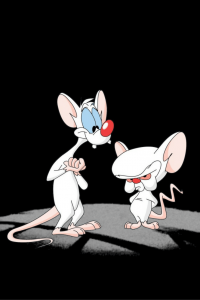
In the cartoon 'Pinky and the Brain', about two laboratory mice and their quest for world domination, the goofy mouse Pinky always asks the other, Brain, 'what are we going to do tonight?' Brain (the mastermind, as the name implies) replies 'the same thing we do every night, Pinky: Try to take over the world!'
This exchange pokes fun at the absurd side of fictional (as well as real-world) villains: their often single-minded obsession with achieving destructive and unsustainable goals. Yet for your villain to not be cartoon-like and a reductive image of villainy, the reader needs to take your villain's plans seriously.
A three-dimensional, believable villain doesn't simply have an inexplicable obsession with gaining power - they also have a motivation behind this desire for power. This motivation might derive from personal trauma and resulting bias. It could result from irrational thinking, for example racism that assigns certain groups more human value or less threatening status based on arbitrary common features. A three-dimensional villain is never malicious or destructive 'just because.'
Your fictional villain can simply be bad through and through, like Shakespeare's Iago in Othello, who manipulates others to murder seemingly for fun (although you could also say power hunger is Iago's motivation). Yet when your villain is as complex or interesting as your protagonist, your fictional world feels real.
So how do you make a villain memorable and three-dimensional?
2: Give your villain's wrongdoing history
There should be history behind your villain's wrongdoing.
Think of great examples from literature. For example, in Joseph Conrad's Heart of Darkness, the character Kurtz is remembered as an organist and scholar in his native Europe. Yet once in a position of power in central Africa, Kurtz commits gruesome acts of violence against locals and abuses his power to the fullest extent as the commander of an ivory trading post.
Avoid making your villain seem a prop that exists solely to thwart or endanger your novel's central characters. Instead, show the history behind your villain's behaviour. To make your villain a complex product of their own backstory and their society, show the personal attributes (psychology and backstory) and external circumstances (societal values and norms) that contribute to or enable their behaviour.
3: Show how your villain wasn't always the bad guy
Avoid writing a villain who, like a Bond villain, seems as though they were born stroking a hairless cat while hatching plots. Instead, show or at least hint at your villain's evolution.
J.K. Rowling does this expertly in Harry Potter. Lord Voldemort was once a student at Hogwarts, just like the series' titular hero. Over the course of the series, Rowling drips out Voldemort's backstory. Why show that your villain wasn't always bad? For two reasons:
- You can show the reader how personal faults, environmental circumstances or both created your villain - development makes your characters more believable
- You'll gain more storylines to unfold alongside your main story arc as you share the origins of your villain
4: Avoid stereotypical villain dialogues
In villain-writing, there are many clichéd phrases to avoid. For example:
- 'We meet again, Mr. X...'
- 'Say goodbye to your [life/dreams/pet poodle/]
- Say hello to [my little friend/my obedient entourage]
- 'Did you really think you would [defeat me/find the documents/die without listening to a long and self-congratulating monologue first]?
The problem with many of the above is that they are unoriginal, being the fodder of countless action and revenge sagas. What's more, they try too hard to convey the snide maliciousness and self-importance of a stereotypical villain.
Instead, craft key dialogue between protagonist(s) and villains around their opposing motivations or goals. Intimidation by great villains is often indirect, as in this line spoken by the cannibal Hannibal in Thomas Harris' The Silence of the Lambs:
'A census taker tried to quantify me once. I ate his liver with some fava beans and a big Amarone.'
To improve dialogue between heroes and villains, take notes whenever you read a conversation between these two character types in a novel that feels unforced and effective.
5: How to create a villain: Use vivid description
The most memorable villains of literature are described using strong, vivid detail. Referring to a villain's 'cold, dead eyes' isn't always enough. Think about other details and mannerisms such as:
- Manner of walking or gait
- Small habits and tics (such as repeatedly licking lips or cracking knuckles)
- Stand-out physical features - what would someone use to identify your villain in a line-up, other than their eyes?
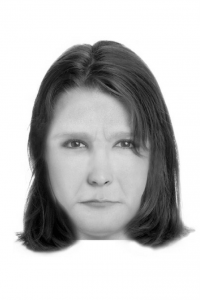
Here are some examples of vivid villain descriptions from fiction:
'His exhausted face, with its scarred mouth ... As his pock-marked jaws champed on a piece of gum I had the sudden feeling that he was hawking obscene pictures around the wards ... But what marked him out was the scar tissue around his forehead and mouth, residues of some terrifying act of violence.'
J.G. Ballard's description of Vaughn from Crash: A Novel
'Her nostrils flared regularly, like the nostrils of an animal scenting fire ... That stony, obdurate look covered her face like a mask ... Only her eyes, those tarnished dimes, were fully alive under the shelf of her brow.'
Stephen King's description of Annie Wilkes from Misery.
6: Create multiple opponents and accomplices for variety
To truly show the scope of a villain's tyranny, influence and power, it's often useful to show their multiple associations. In The Lord of the Rings, Sauron fights wizards and ordinary Hobbits alike. He is aided by allies and accomplices, such as the fallen wizard Saruman.
To create a memorable villain, show how your antagonist interacts with those in their favour as well as those who aren't. Do they treat both with equal cruelty? Or is there contrast between their respect towards people in their camp and malevolence to anyone outside it?
Creating multiple adversaries as well as henchmen will give you opportunities to show different facets of your villain. You can show how far power has corrupted your villain, depending whether he is uniformly unforgiving and cruel or has select blind spots.
Who is your favourite fictional villain of all time? Tell us in the comments.
Working on your own story's villain? Get helpful feedback from other writers on how to improve your villain now.



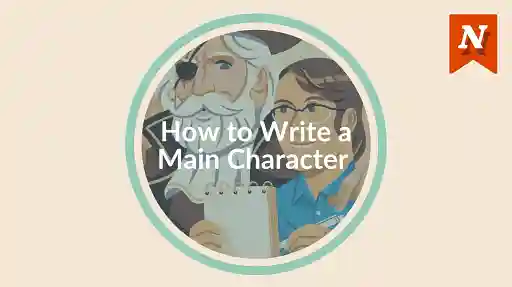
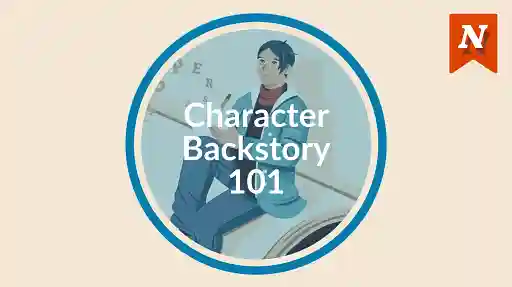
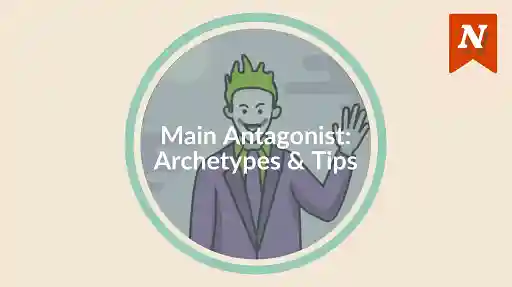
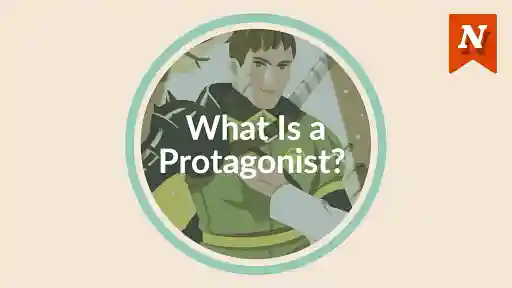


Cornelius Van Zale from Susan Howatch's THE RICH ARE DIFFERENT and THE SINS OF THE FATHERS.
Ms C - Over 8 years ago
Now I want to pull out my Evil Overlord again! He's read The Evil Overlord List and has taken notes, and this has let him stay in power for five hundred years now, but now that he's oooolld and really, REALLY tired, there's nobody competent enough to leave his empire to! What's an evil overlord to do when he wants to retire, but raise up a rebellion against himself, to choose his successor!
Tammy J Rizzo - Over 8 years ago
I love that, Tammy. Shades of Pratchett.
Bridget At Now Novel - Over 8 years ago
Now i want to read that ovelord book
Ron Ron I - Over 6 years ago
My favorite villain was Hannibal Lecter. He was creepy but yet polite; but had a sinister side that made my skin crawl. He was Awesome!! LOL
Jadetatsu - Almost 7 years ago
If you want to read a REALLY good villain, I'd suggest Pryrates from Tad Williams's Memory, Sorrow, and Thorn trilogy. He's one of the most evil and well-written villains I've ever read. (And however much I love to read him, it's made me hate writing anything close to that kind of villain, because I can't match him.)
M. M. Angel - Almost 7 years ago
Hehe. I have two stories i really like to write. The one story is about Time Travel and there the Villain is Dylan Carter who rules with an iron fist over Crystal Prep Academy. He is determined, fearless and does anything in his power to get the good guys (Daniel, Gloriosa & Harold) as much away from his girlfriend Sirena whom´s past Dylan has changed together with his friends. And then Villain 2 is Mellanie Navalsdotter the bad bitch from the Mermaid and The Land Boy. She is the ex girlfriend of Jackson Matthews and tries to sabotage and damage Jackson his new relationship with Jennifer as much as possible. She is mischievious, mysterious and sadistic. Her greatest strength is messing and manipulating other people which leads them in misery. Hehe, I already made an edit of those two together and planning of a unofficial Dylan meets Mellanie short story as beginning of it.
Patrick Visser - Over 6 years ago
Creating a new psychopath villain with a working name (subject to change) of Mr.Shadowface aka The Void! He is not real but actually a manifestation of your fear of unknown. Appears as a dark figure with head of shadow or void.
Uddipan Sarkar - Over 5 years ago
Thanks you for sharing that, Uddipan - it sounds interesting. Similar function to Stephen King's It which also takes the form of its victim's fear. Thanks for reading our articles.
Jordan At Now Novel - Over 5 years ago
Before you read this, I would like to remind you that I'm only in my teens so my story writting is crap. I'm trying to make one of my characters shift from good to bad because of them finding out about their "story". Does anyone know how I would go about doing this without it becoming stereotypical/cliche or boring??
Addi - Over 5 years ago
Hi Addi, I'm sure your story writing isn't so bad, but being willing to work on it is the first step :) This is quite a common trope, where a revelation about a character's past or truth turns them bad. However you could make it less stereotypical or cliched by making this process of finding out more gradual and deeper. It's rare that someone finds something out and flips instantly to being 'bad' (or rather acting from fear, anger, pain, etc.). Rather it's usually a series of poor choices, or, for example, you commonly find that serial killers sustained familial abuse or other hardships over time that broke them. So making it not an instantaneous flip from good to bad but rather a series of events that reshapes your character's world view and possible choices would help to avoid their change seeming cartoonish or cliched. I hope that helps!
Jordan At Now Novel - Over 5 years ago
I also have a story, but my big question is how do you manage to work with multiple villainous forces while letting these antagonists connect together in some sort of way. My story actually has a summary, below: A perfectly anonymous criminal, notorious at the least, Daya Asan runs through the streets of San Francisco without so much a glance back. She might pull off capers and street races and may not have been exposed in the act, but Asan is more than just a criminal...she has a reason, something that she is willing to fight to death for. And because of that, she’s made sure to never be caught...well...that’s until she is. Elias Gray, the president's son, is determined to prove himself to the world, one can be perfect for only so long, and he’ll go any length to do so. So, when he discovers Daya’s secret identity, being an addict to trouble, he can’t resist the ideal opportunity...well, again… that’s until he falls for Daya stands for. Elias is powerful and Daya is villainous and... oh...what a pair power and villainism makes. ….. “What are you going to do? Shoot me? I dare you...” He taunts. That’s it. That’s the last straw for me. I pull the trigger. Let the consequences come, whatever they may be.
Tp - About 5 years ago
Hi Tp, Thank you for reading the blog and sharing this question. It sounds to me as though you already have an idea of how to work with multiple villainous forces in this: So, when he discovers Daya’s secret identity, being an addict to trouble, he can’t resist the ideal opportunity...well, again… that’s until he falls for Daya stands for. Elias is powerful and Daya is villainous and... oh...what a pair power and villainism makes. So here, for example, multiple villainous forces may collaborate because one enjoys power from a distance and other enjoys carrying out nefarious commands and actions with the protections of big power (such as the power of a tyrannical state or other 'protector' or 'master' -like figure). I'd suggest going back to goals and motives. What ways do multiple villains' desires overlap, giving them a reason to work together?
Jordan At Now Novel - About 5 years ago
So essentially I'm writing some fantasy. And there's this ONE villain who I'm so intent on making some antagonist like him; he's known as Gaunter O'Dimm or also as Master Mirror from Witcher 3. I just absolutely adored his traits and the mysterious evil aura about him, the extent of his power. I want to create a villain something like that, but neither do I want to lift qualities straight out of him. I want a villain who's not especially evil like the stereotypical evil, but rather the mysterious kind of evil who does what suits his agenda the most. If you could reccommend me some tips to create such a villain...then it'd be real nice...
Cosmic Gaming - Over 4 years ago
Hi there, thank you for sharing your challenge. That sounds an interesting type of villain. It reminds me of Iago in Shakespeare's Othello, because although he torments Othello to the point of comitting murder, his motivations shift and change all the time and it seems like he just enjoys stirring up negativity and violence for his own enjoyment. Some tips I'd say would be: - Think about said agenda: What do they want most? - What is mysterious about their evil (their motivation, the backstory that lead up to their having this malignant will, etc.)? - From what do they draw their power? For example, do they have close allies who share their agenda, or are they merely charismatic and able to intimidate or sway people? I'd say stereotypical villains often read stereotypical because their malevolence seems overly crafted around the hero's goals or purpose, rather than around their own complex origins and their plan ahead.
Jordan At Now Novel - Over 4 years ago
This is very enlightening. Thank you so much for taking the time. I wasn't sure I was going the right direction with my villains until I read this. I have a series that I am working on thats been put on hold for.... let's just say reasons. I felt like I might have been doing too much on his end and I wanted to avoid the clichés as much as possible. The book that I am currently working on is a romance and suspense novel. This villain is much more simple than the previous one. Even the way he meets the protagonist is considered trivial but there's an obsession that seems to have automatically taken hold of him to the point that hes jealous of anyone that gets attention from the protagonist. Even though I was going for a less convoluted villain, I was worried that maybe I was making him too simple. However, I think that for this particular book simplicity suits the villian best. I wanted to turn something as simple as getting a cup of coffee into something really terrifying. So thank you so much for this insight
Small Yeti - Almost 3 years ago
Hi Small Yeti, I'm glad you found this article helpful in creating the antagonist for your romantic suspense story. It sounds as though you're on the right track, keep going and it's a pleasure :)
Jordan - Almost 3 years ago